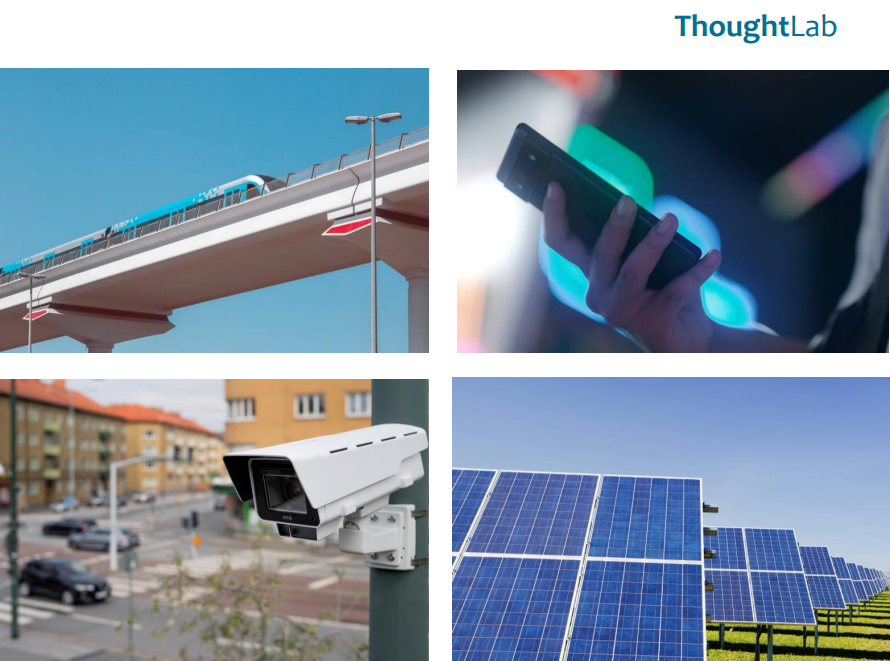The Story of the Day - Three Trends Shaping Chip Coverage in 2025
- pcomish
- Sep 2
- 4 min read

By Stephen Russell
The first half of 2025 has been a wild ride. And while every industry has experienced some level of turmoil, the semiconductor space has experienced tremendous volatility. From uncertainty involving the Chips Act, to the impact of tariffs, new leadership emerging at industry stalwarts (see Intel), companies shifting manufacturing strategies to the U.S. (see TSMC) and everything in between, chip companies have had an interesting year. This volatility has also found its way to the chip media. The story of the day has become king in 2025 with reporters taking a wait and “let’s see what happens today” approach to reporting.
That being said, there is a large contingent of semiconductor press who are looking for a bigger story that goes beyond the impact of the current geopolitical landscape. Here are three trends that are shaping coverage in the chip space:
Insulation from Volatility: Chip companies are often vulnerable to volatility given the fluctuation in supply and demand for products that rely on chip technologies (i.e. consumer electronics, automotive technologies, IoT devices ), rapid technological innovations, the complexity of global supply chains, geopolitical tensions, evolving trade policies and more. Reporting on this volatility is one thing but reporting on how companies are insulating themselves from volatility is more intriguing. Reporters obviously know that the chip space is experiencing uncertainty, but in my conversations with press, the most newsworthy aspect is what these companies are doing about it.
What types of markets are companies focusing on to insulate themselves from tariffs and geopolitical volatility? What are they investing in technology wise? Are they focusing on certain regions vs. others? Are they adjusting manufacturing strategies? From IBM’s new chips and servers that will “simplify” the roll out of AI in business operations, to GlobalFoundries’ plans to spend $16B in US chip production to changes in how chips are developed, these are the types of business stories that are garnering interest and answer a question that press are most eager to learn in 2025. In a year full of volatility, what does the new-age semiconductor company look like?
AI Continues to Dominate: One reporter recently told a colleague of mine that, “there is a low bar for AI stories.” That continues to be the case as we enter the second half of 2025. From stories on AI startups to AI chips and AI networking technology, stories on this mega trend continue to garner ink. Silicon plays a crucial role in AI, because chip design impacts the speed and efficiency of a data center, an LLM and AI on the edge or in devices.
So far in 2025, NVIDIA has been the company grabbing a majority of the headlines. And for good reason. From Jensen Huang’s CES keynote to GTC in the spring, NVIDIA continued to be the centerpiece of AI. Then, when DeepSeek emerged, it grabbed headlines and challenged perceptions on AI training costs and the need for massive amounts of chips and energy to develop AI models. For the first time in years a new approach gave the industry pause. Since then, press have been eager to talk to companies challenging the norm.
Which startups are taking different approaches to AI chipsets or AI infrastructure? Which companies are bringing to the market cheaper, more sustainable AI offerings? Will NVIDIA continue to dominate AI headlines in the second half of 2025? Of course they will, but I do expect some interesting counter points and new philosophies on AI tech to emerge. Companies bold enough to go on record with an alternative will also grab headlines for the rest of the year.
Chip Innovation: Everyone loves a good innovation story… and the chip industry is no different. In a year of volatility, semiconductor press are eager to learn about the types of technology advancements that will shape the industry for the years to come – well beyond today’s industry uncertainties. While AI chip innovations will continue to take center stage (HBM, neuromorphic computing, edge AI, etc.), topics like advanced packaging, miniaturization and innovative manufacturing technologies will grab interest. Chip design and chiplet architectures are also garnering attention as companies rethink design to gain a competitive advantage on speed, efficiency and power.
One other trend that has evolved is the topic of sustainability, specifically the use of photonics that leverages light for data transmission to reduce energy consumption while simultaneously increasing capacity and the speed of data transmission. Reporters who went from taking briefings on photonics technology to educate themselves on the topic are now actively seeking stories on optical and light-based technologies that are set to revolutionize not only industries such as AI but computing as we know it.
2025 has proven to be an unpredictable year for the semiconductor space. As volatility reigns supreme (hopefully for only a little while longer), the three trends above will continue to garner press interest and shape stories you’ll read throughout the rest of this year.



